Right Fit Revolution
Don’t Overpay for College
The Million-Dollar Mindset Shift
College Choices That Create Wealth, Not Regret
We’ve all felt it… That subtle pressure that sneaks into every conversation.
Over dinner with a well-meaning friend.
On the sidelines at Saturday’s game.
Bumping into your nosy neighbor while taking out the trash.
“So… where’s your kid applying??”
It sounds like small talk. But what they’re really asking is whether your kid is aiming for a top-ranked, brand-name school.
What’s really surprising is that most parents say they don’t care about prestige. But they believe everyone else does…
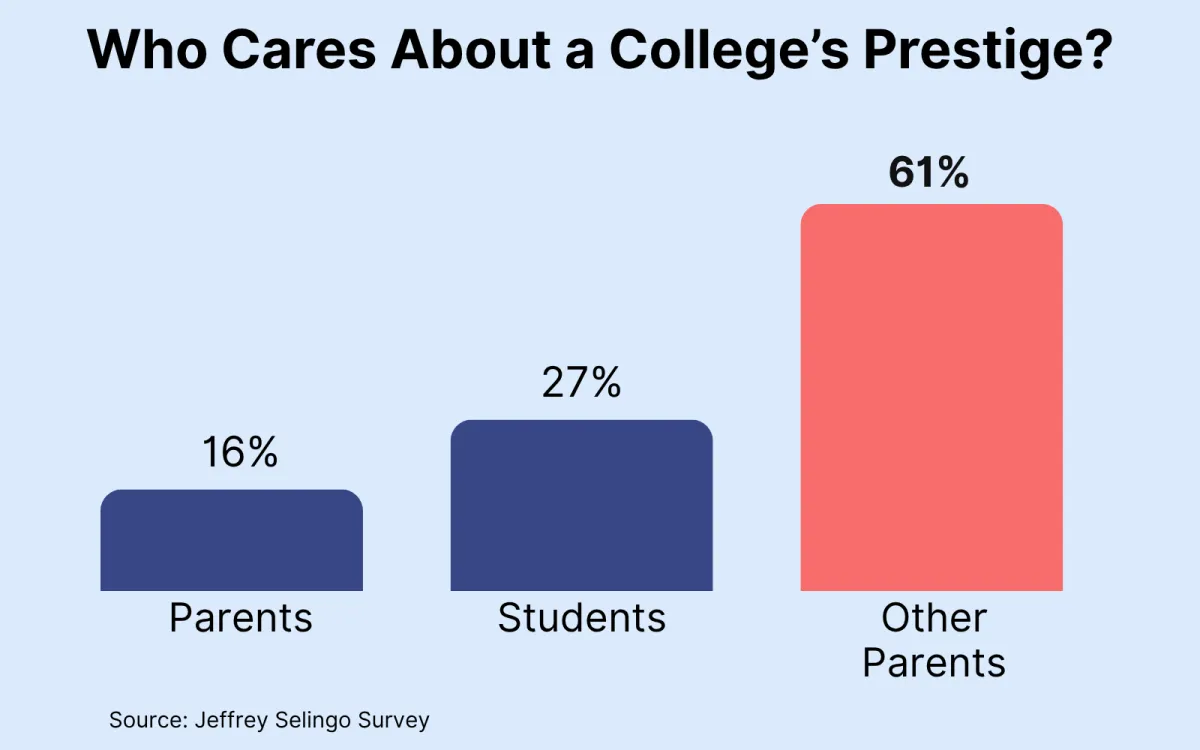
It can feel impossible to escape the pressure. And it’s driving smart, loving families into bad decisions.
“Well…We All Want What’s Best For Our Kids. And Elite Schools Set Them Up for Life. Right?”
Let’s put that belief to the test.
We’ve been sold a lie.
One that’s costing good parents like us hundreds of thousands of dollars — and hurting our kids.
So where does this pressure really come from?
We call it “The College-Industrial Complex”: a massive, multi-billion-dollar system convincing families there are only a few “right” schools — no matter the cost, or the consequences.

Coming up later in The Rankings Trap Exposed, we’ll reveal just how things got so twisted, and why it’s time we stop playing their game.
But first…
😱 WTF: “Perfect” Isn’t Enough to Get In Anymore?
If it feels like getting into a top school is practically impossible these days, that’s because it is.
Take the Ivies, for example.
Even if your kid is at the very top of their class, they’re still competing against 52,000 valedictorians and salutatorians from across the US for one of just 14,600 spots.
That means despite taking on impossible course loads, endless extracurriculars, and stress that keeps the whole family up at night, 72% of the very best students in the entire country still get rejected.
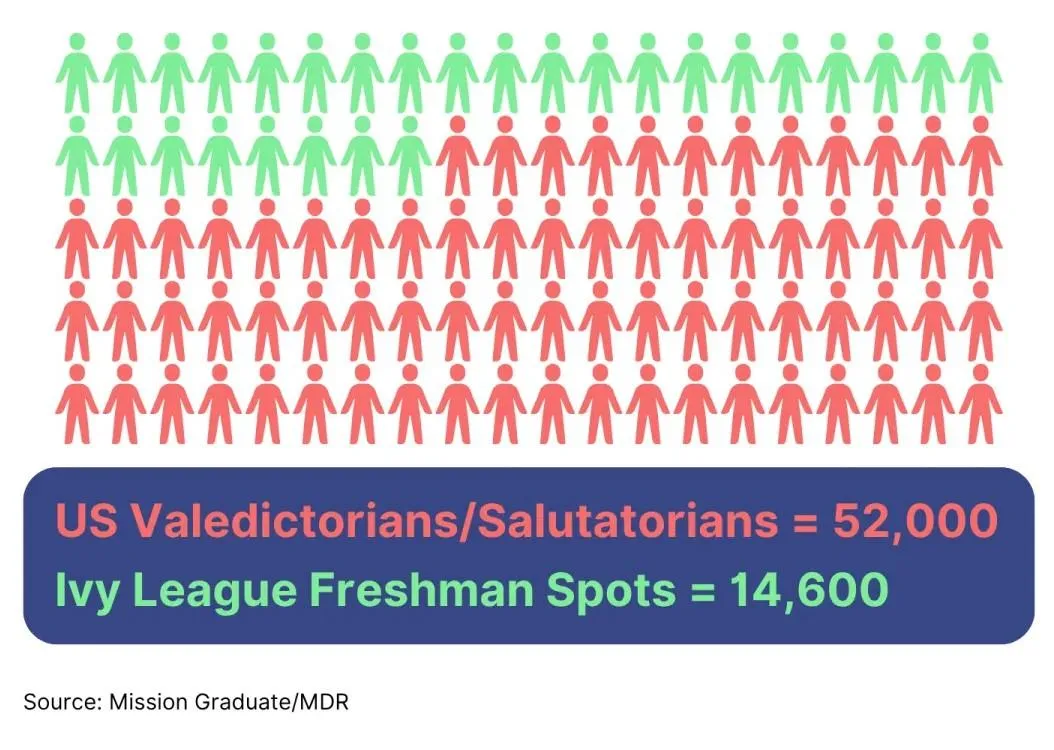
And it’s only getting worse. According to the Wall Street Journal, two generations ago Ivy League schools accepted about 20% of applicants. Today?
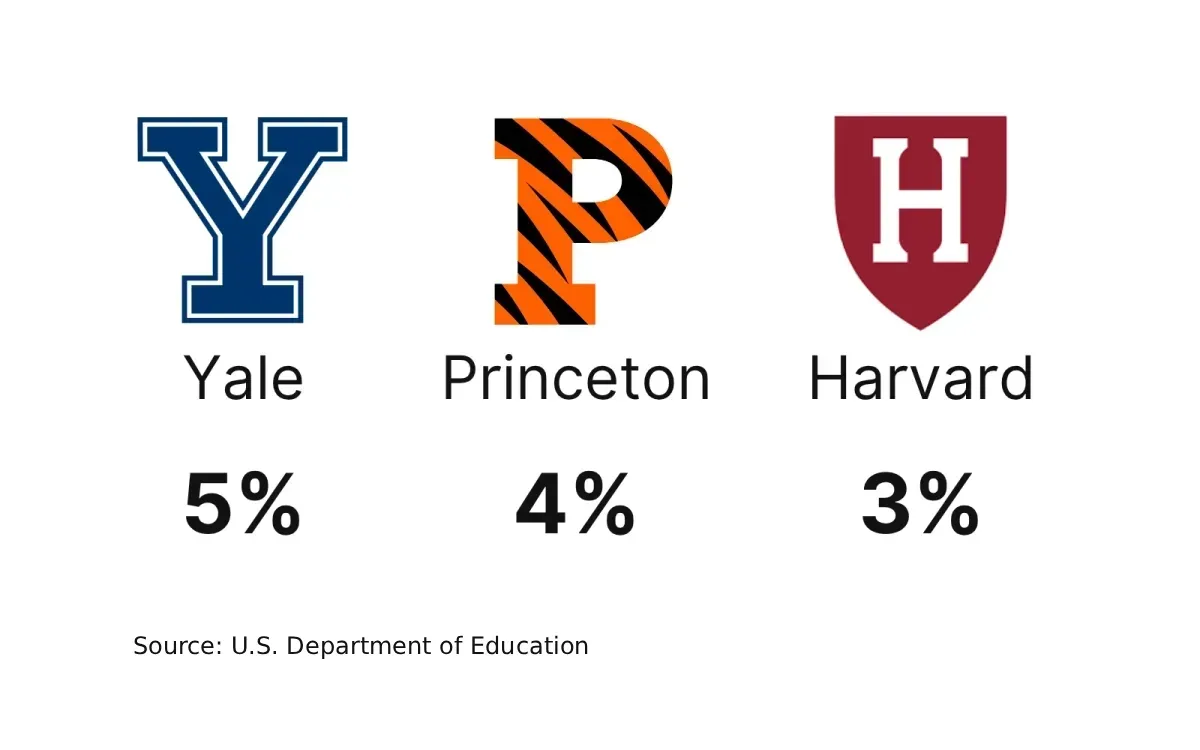
You can practically hear hearts breaking across the college forums:
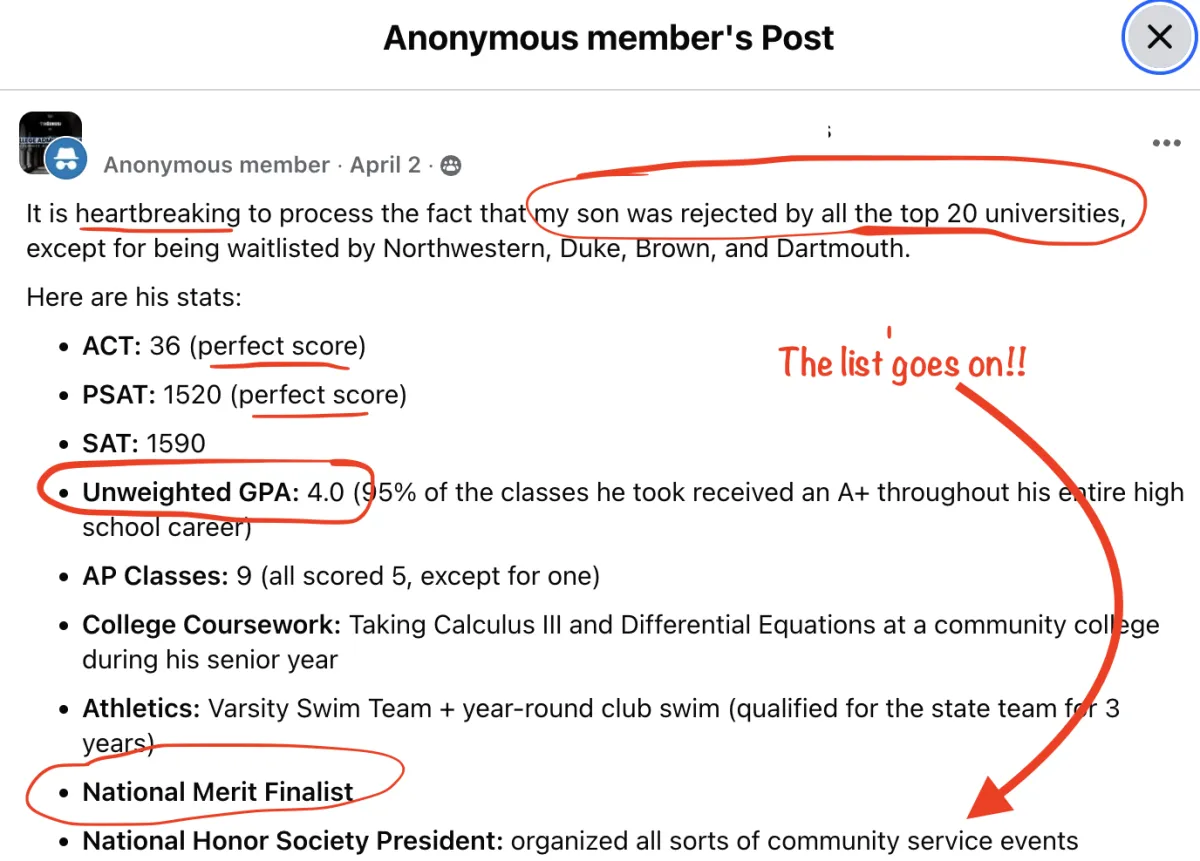
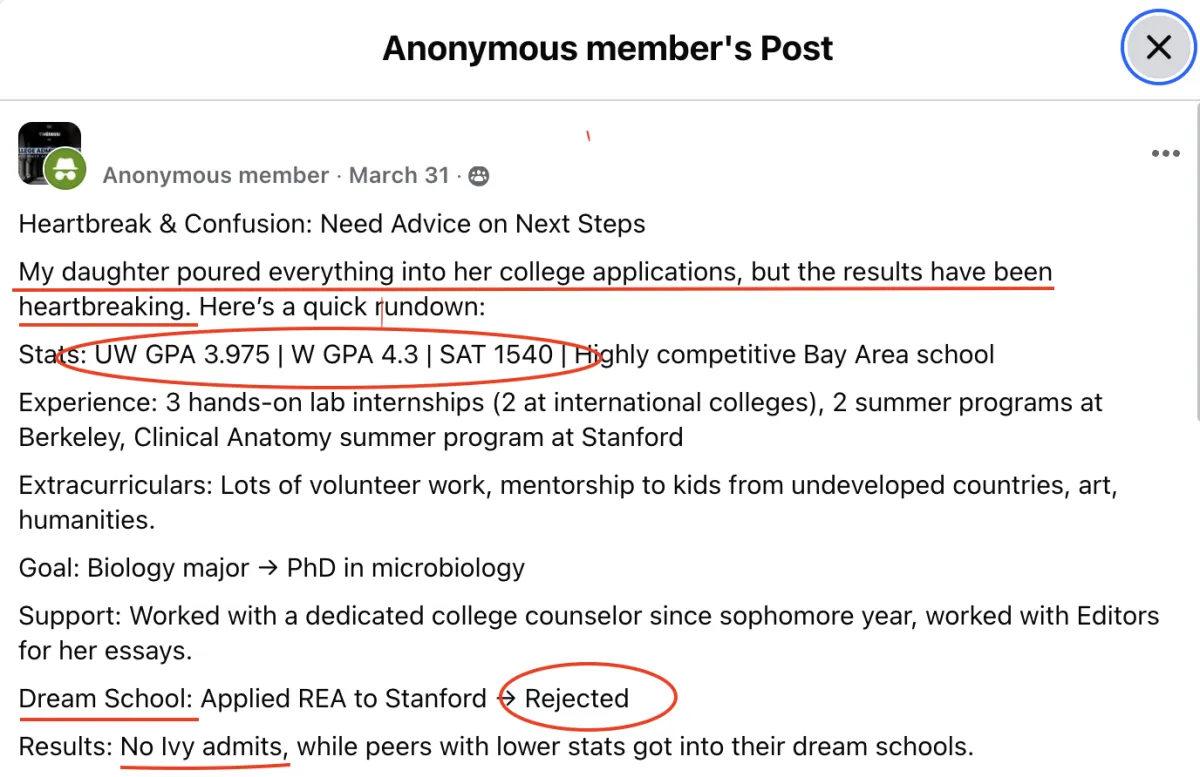
These students did everything "right." And yet the system told them: you’re not good enough.
Stick with us here — the good news is coming, we promise! But we’ve got a few more lies to dismantle together first…
“OK, Let’s Say My Kid Does Get In. Then They’ll Be Happy. Right???”
Not so fast.
For many kids, that’s when the real pressure begins.
Every school has a bell curve. At elite universities it’s more likely your child will end up on the bottom of that curve.
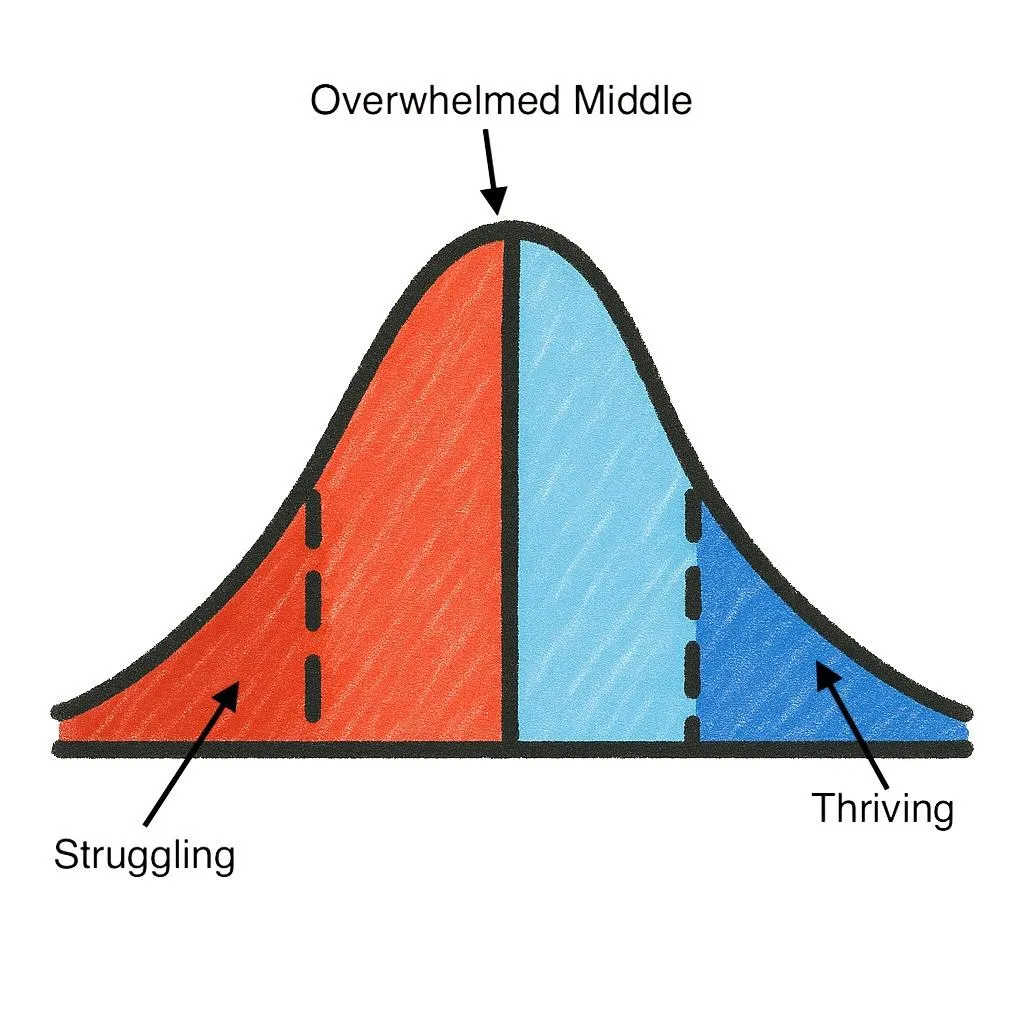
In David and Goliath, Malcolm Gladwell shares the story of Caroline, a bright, science-loving student who got into her “dream” school: Brown.
But once she got there, the coursework was intense. Her peers were brilliant — and competitive. Instead of collaborating, they wouldn’t study together or help each other.
Caroline, who had always felt confident in the classroom, suddenly felt outmatched.
She lost confidence in herself and eventually dropped her science major altogether.
Years later, Gladwell asked what would’ve happened if she’d chosen University of Maryland (her “safety” school) instead. Her answer?
“I’d still be in science.” 😢
What happened to Caroline isn’t rare.
According to Gladwell, students at elite colleges are far more likely to drop STEM — not because they can’t keep up, but because they feel like they don’t belong.
One study found that students have a higher chance of finishing a STEM degree at a less elite school than they do at Harvard.
And this isn’t just about performance. It’s about mental health.
Did you know students at elite colleges report twice the national rate of anxiety and depression?
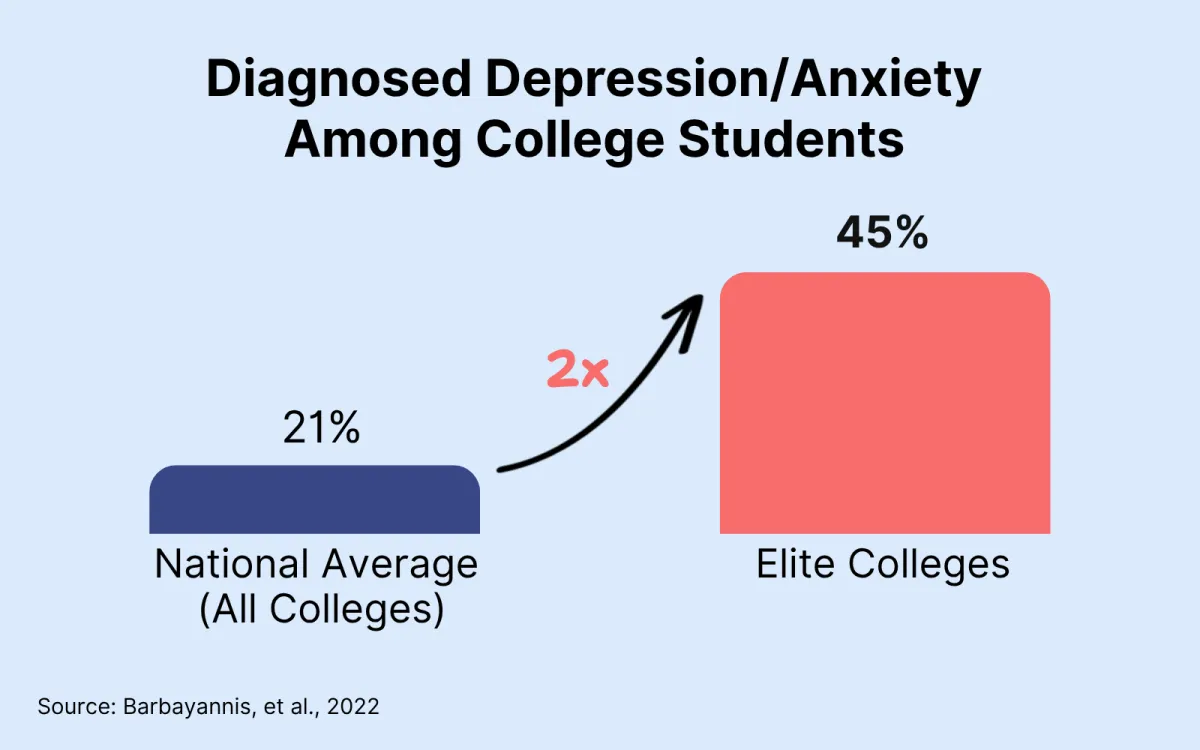
What’s going on here??
Kids feel the pressure to be perfect — all the time.
They look around and wonder if they’re the only one struggling.
They hide how hard it is, because no one else seems to be falling apart.
Getting in may seem like the finish line.
But inside those ivy-covered walls, too many students are overwhelmed, isolated, and suffering in silence. This is a far cry from the amazing college experience we envisioned for our kids.
It’s not our fault, but most families have bought into the narrative that getting into a “top” school guarantees a better life.
Getting in is just the beginning. What matters is whether they thrive once they’re there.
What matters most to you about your child’s college experience?
They’re happy, confident, and supported
It sets them up for long-term success
It doesn’t leave them (or us) drowning in debt
If you chose any of those, you’re going to love what comes next…
Finally, the GOOD News:
Most Colleges Accept Most Students.
We know! That shocked us, too.
As admissions expert Jeffrey Selingo points out, national data shows:
There are over 2,600 4-year schools in the US.
The average U.S. college acceptance rate is around 73%.
Just 200 schools admit fewer than 50% of applicants.
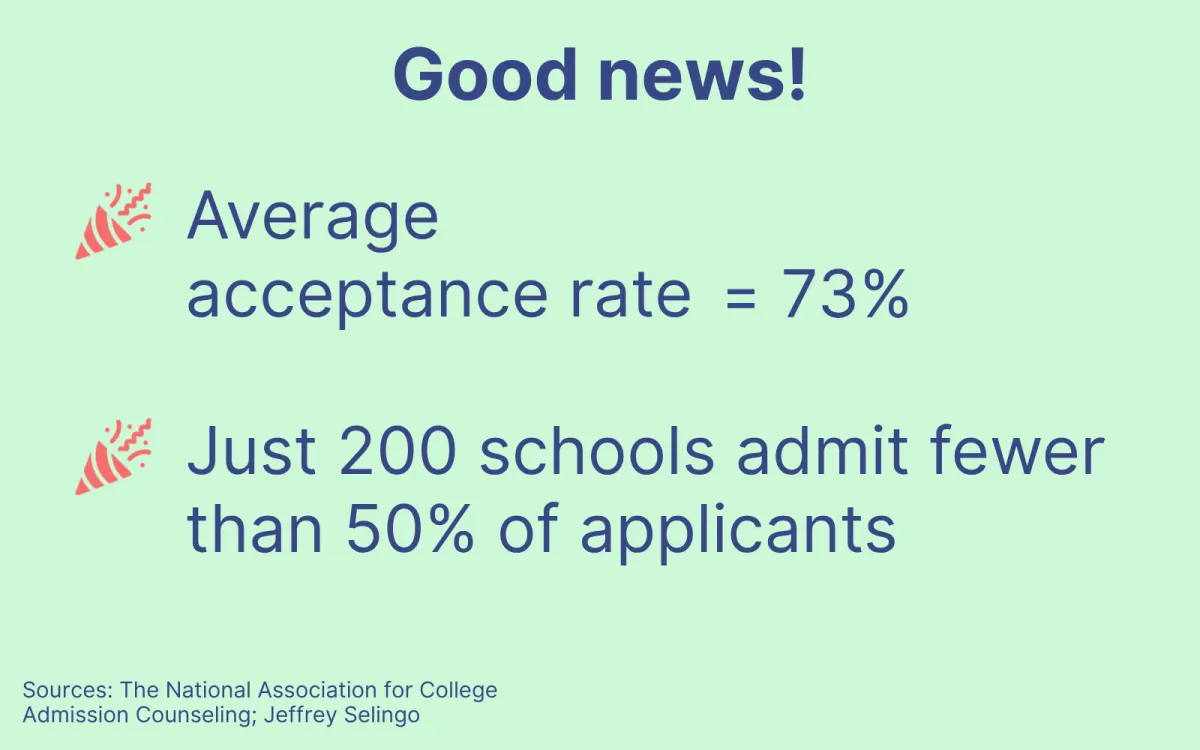
So while everyone else is scrambling for the same 25 schools…
There are hundreds of incredible schools where your child can thrive, grow, and create a successful life.
The Smartest Move Most Families Overlook
Choosing a lower-cost, less-hyped college doesn’t mean your child is giving anything up. In fact, it might be the smartest, most freeing decision your family makes.
Get this: Economists Stacy Dale and Alan Krueger studied students who got into both elite and less-selective colleges.
Some picked the big-name schools. Others didn’t.
The result?
No significant difference in earnings between the two groups — unless they were from underrepresented backgrounds or the first in their families to attend college.
The school’s prestige didn’t drive success. The student did.

Study: No difference in earnings between graduates of elite and non-elite colleges!
Source: Dale and Krueger
Quick reality check:
There are a few industries where an elite degree can still open doors — especially early in a career. Think: private equity, investment banking, management consulting, and Nobel®-level science.
But unless your kid is chasing a hedge fund or a hydrogen particle, the elite label doesn’t matter.
Need some real-world proof?
A 2024 study found that most fortune 500 CEOs come from non-elite schools!
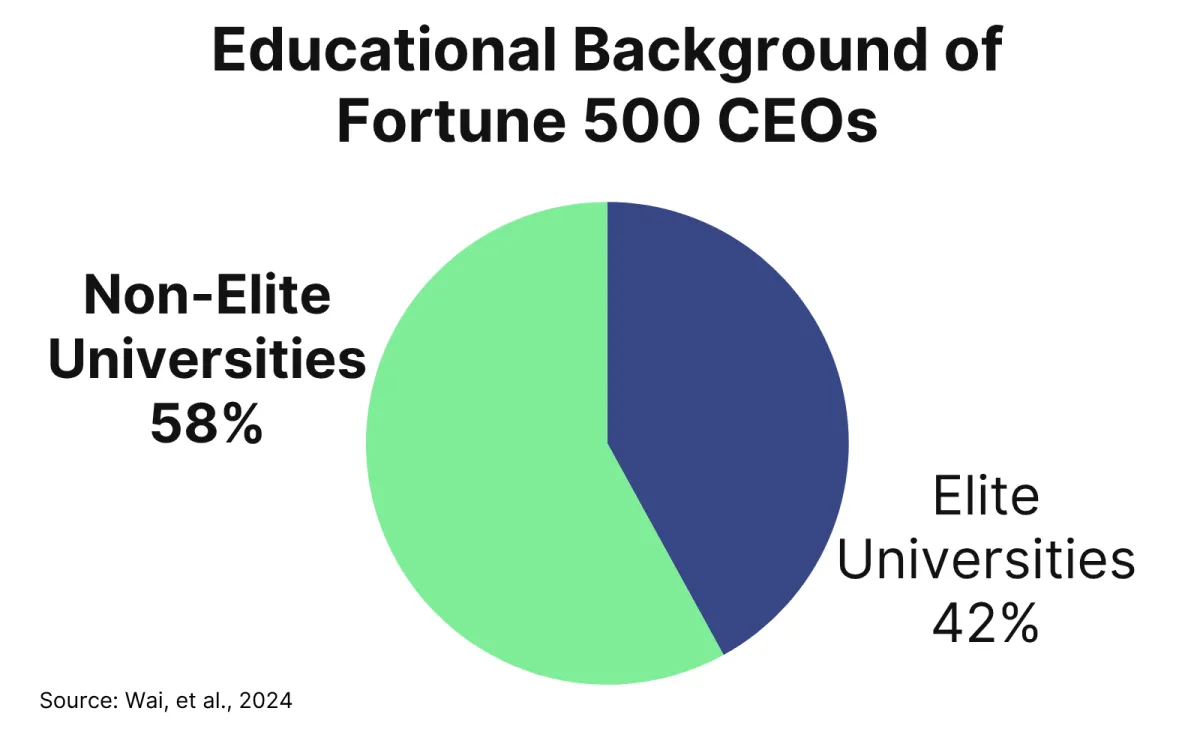
In fact, Fortune points out that 14 of the CEOs running the 20 biggest companies in the Fortune 500 earned their degrees at public universities.
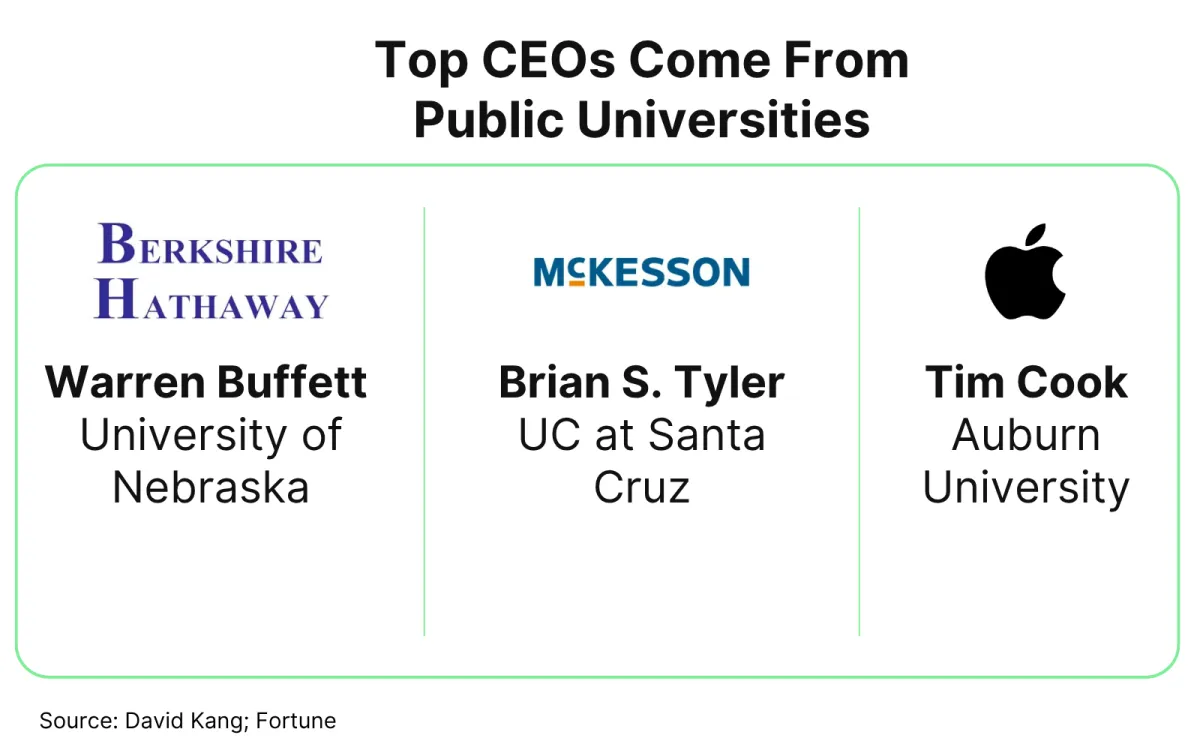
It’s not about where they go to school. It’s what they do when they get there.
Here's What Actually Predicts a Great Life After College
(Spoiler: It’s Not Prestige)
A massive Gallup-Purdue study asked more than 30,000 college grads a simple but powerful question:
What actually leads to a fulfilling life after college — one with purpose, strong relationships, financial security, and meaningful work?
Their answers had nothing to do with rankings or prestige.
It came down to four key experiences — what we call The 4 Fit Factors:
Professors who care about them as a whole person.
Real-world learning — like internships, research, or long-term projects.
Feeling supported and encouraged to pursue their goals.
Graduating with little or no debt.
That’s it.
Guess where students are least likely to find The 4 Fit Factors?
The Ivy League.
According to The Price You Pay for College, Ivy League schools ranked dead last for student-reported mentorship.

Why? Because at many elite schools, the priority is building a faculty of high-profile researchers — people who publish, win grants, and raise the school’s profile.
Many don’t teach undergrads at all. Others hand off lectures to grad students or TAs.
At schools like this, students might get a name-brand diploma, but not the personal connection that helps them thrive after school.
Grads With Less Debt Thrive in Every Way That Matters.
Full Stop.
Gallup found that graduates with little to no student loan debt were significantly more likely to be thriving after college — not just financially, but across every area of well-being they measured, including purpose, work satisfaction, relationships, and health.
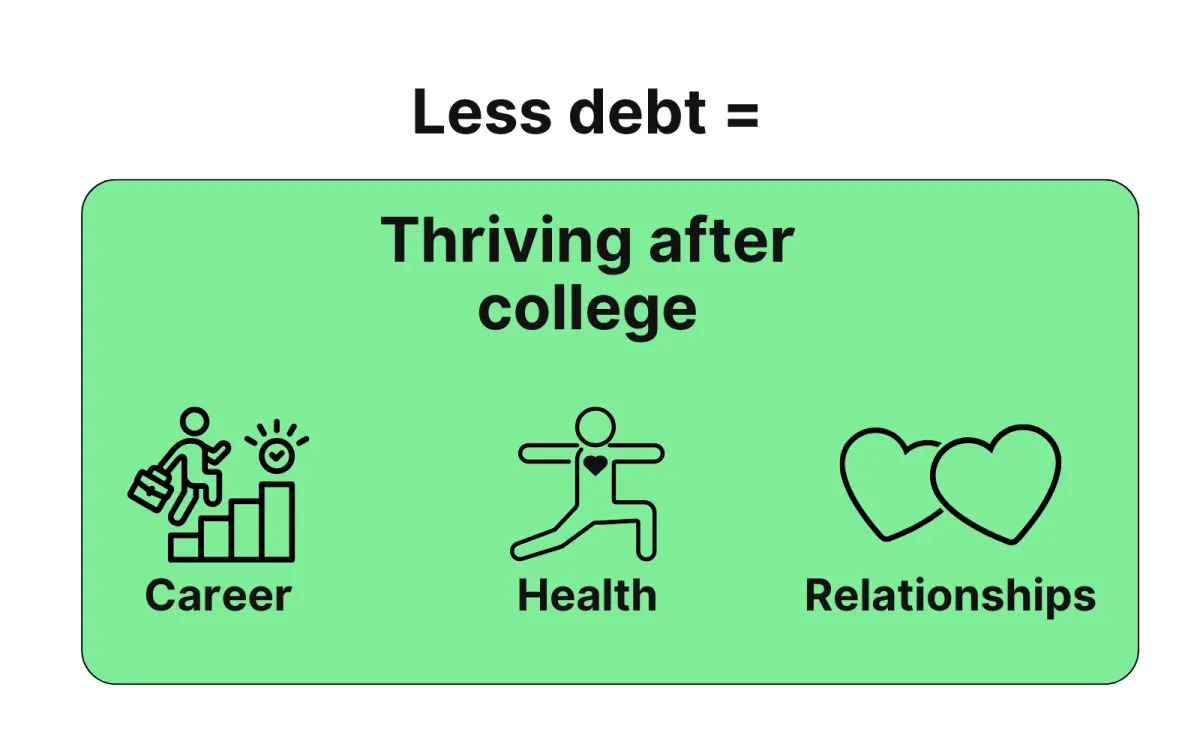
Bottom line?
Prestige doesn’t lead to thriving. Freedom does.
💭 Just imagine…
Your kid graduates, starts their career, and actually has breathing room — no debt, no panic, just freedom.
🖐️ Yes Please!
💰 What’s the Real Cost of Prestige?
Elite schools rarely offer merit aid (non- “need-based” money).
They don’t have to, because they know families will pay full price for the name brand… even if they have to struggle to “make it work.”
But the cost isn’t just four years of tuition.
It’s a debt anchor their child can drag around for a decade or more, delaying career moves, saving for retirement, home ownership, even starting a family.
Meanwhile, amazing schools outside the Top 25 may offer your child tens of thousands in scholarships to attend — freeing them to pursue opportunities, take smart risks, and enjoy life without financial strain.
Let’s take a closer look…
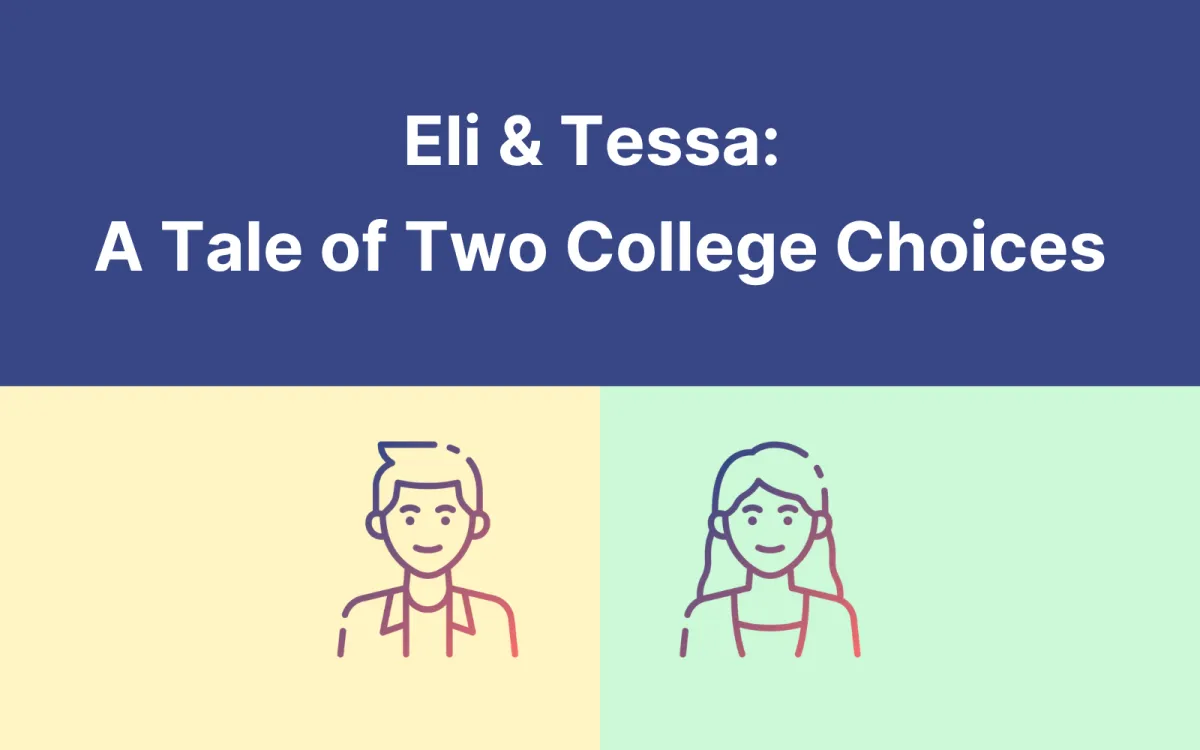
→ Eli gets into a Top 25 school.
→ Tessa chooses her state’s flagship public university.
Both families have saved $50K. They each take out loans for the rest.
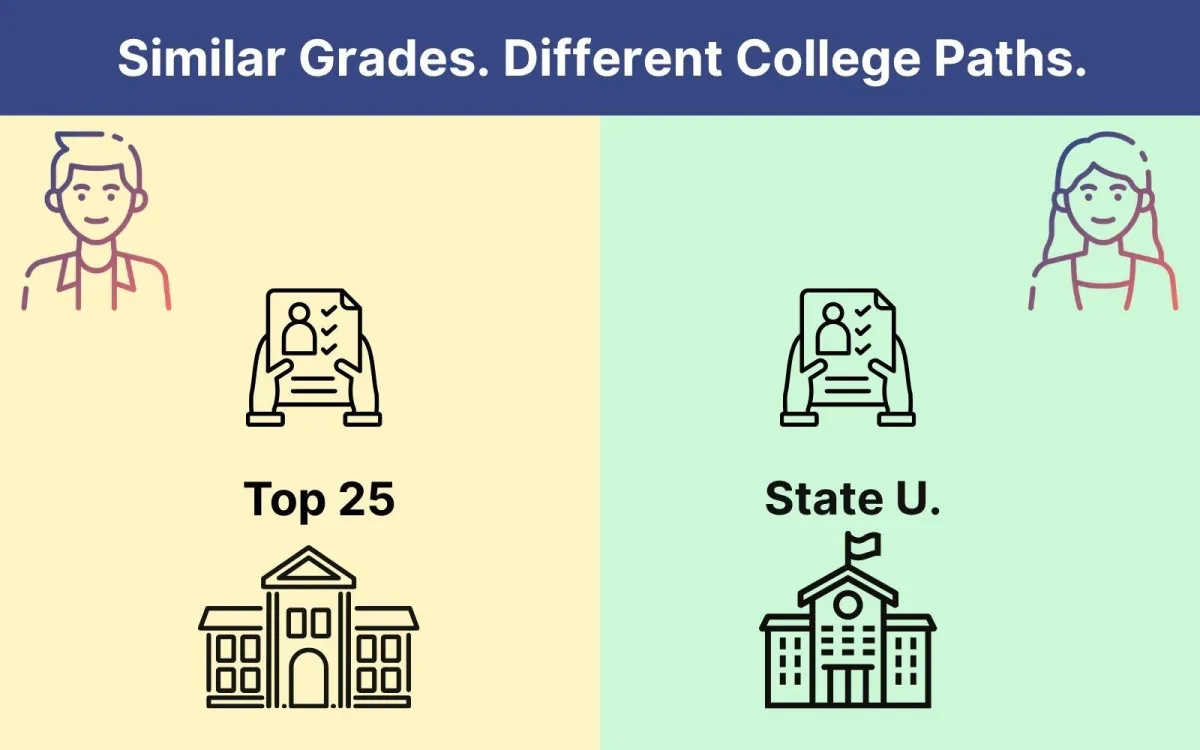
Same degree. Wildly different cost.
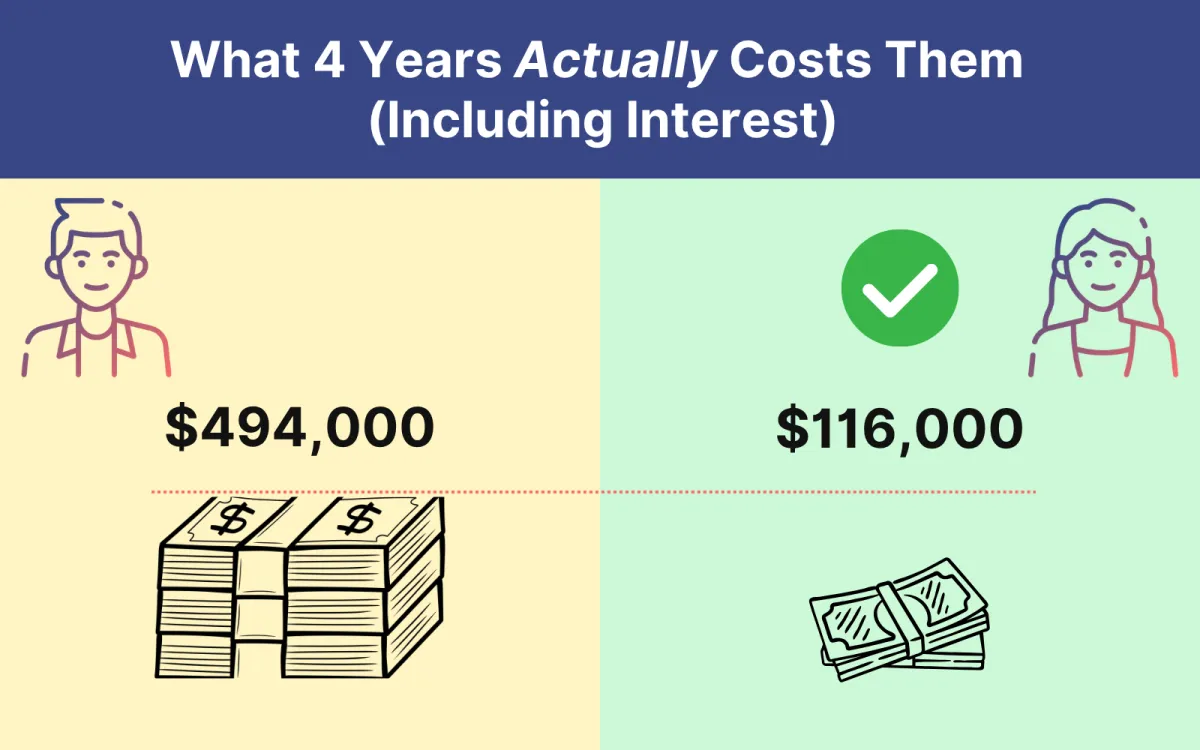
They both graduate and get hired.
Thanks to the name-brand degree, Eli starts with a higher salary.
Looking good for Eli, right??
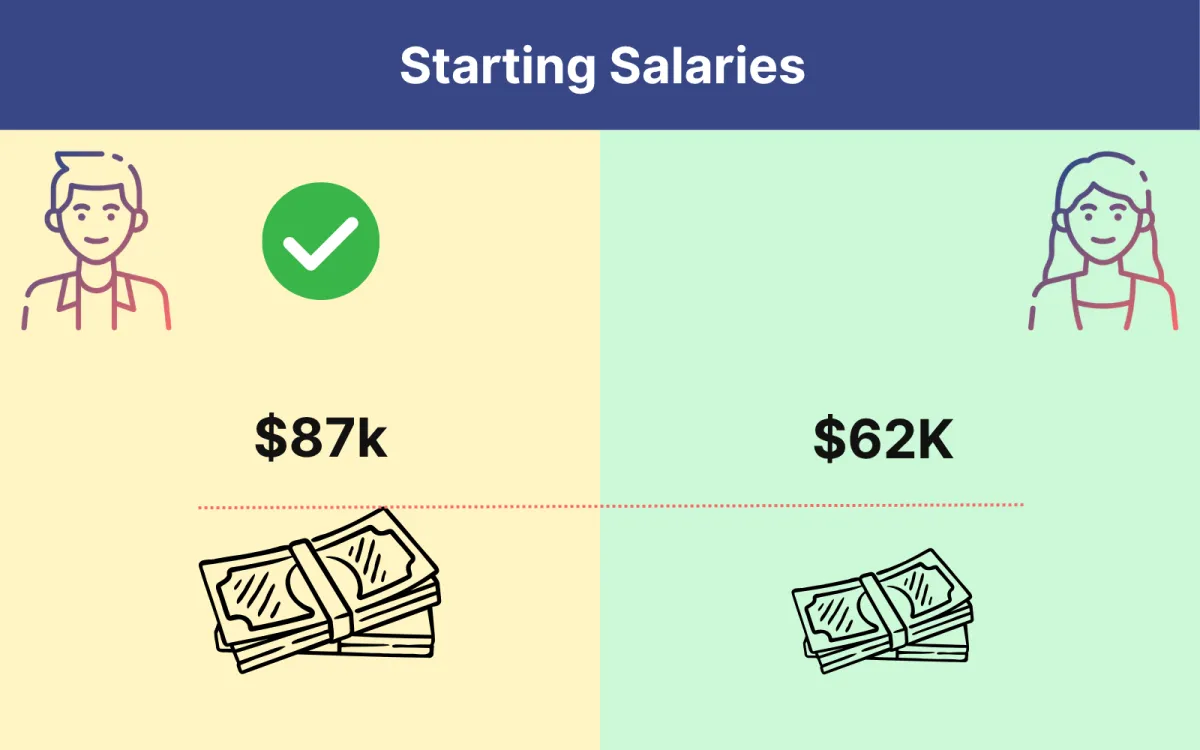
BUT when you factor in loan repayments…
Tessa’s salary is actually higher!
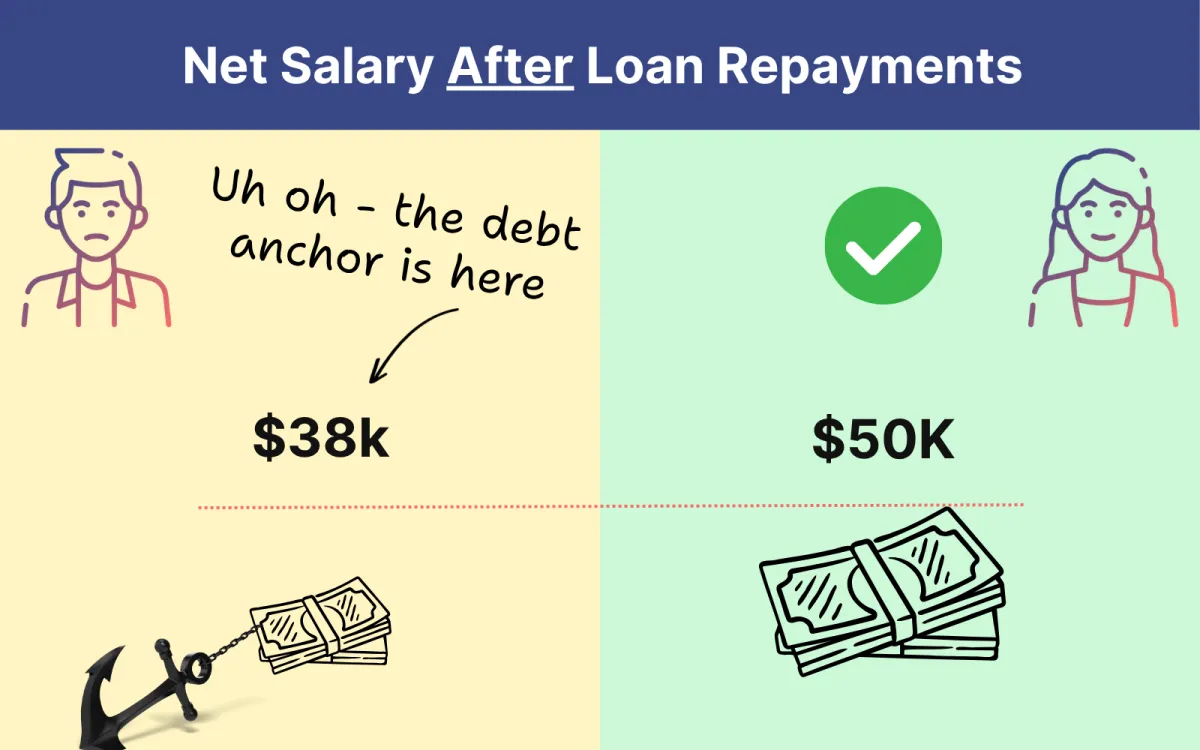
The Shocking Wealth Shift
Now, here’s where it gets wild: Because Tessa’s school debt was a lot lower…
Tessa has an extra $1,000 to invest each month.
(She does it for just 10 years, and then never invests again.)
Eli has $0 left to invest.
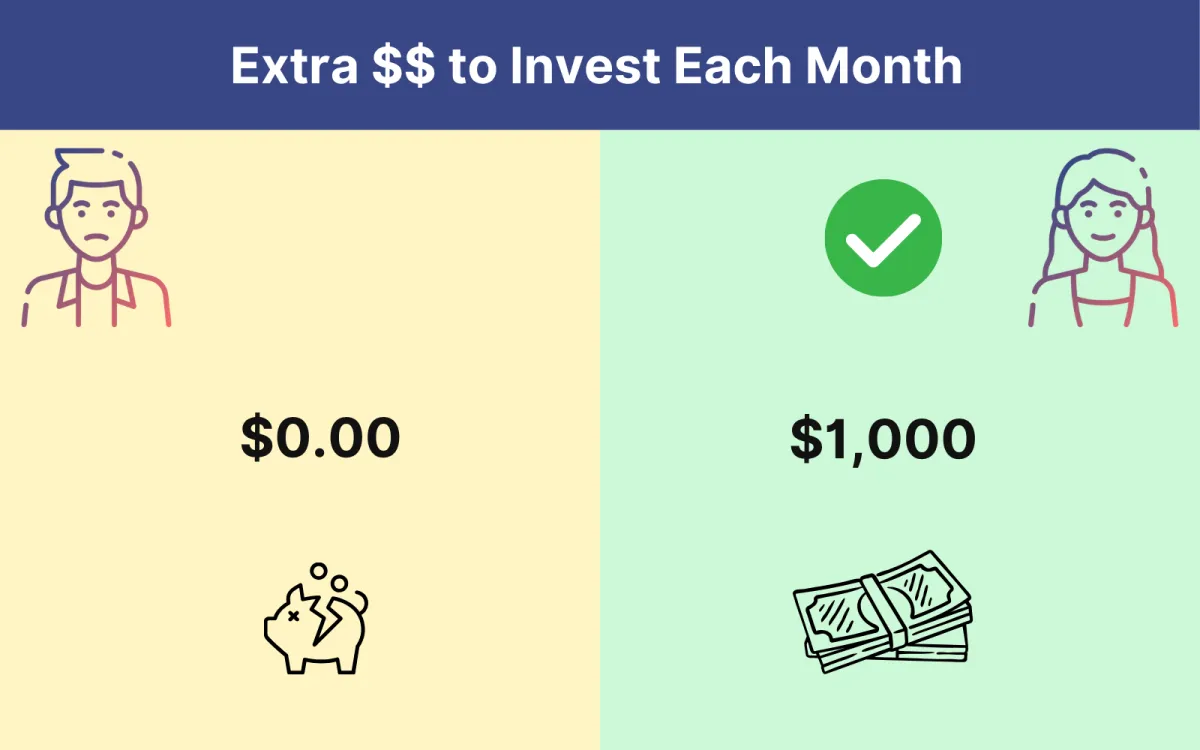
Fast-forward to retirement, here’s what that investment looks like…
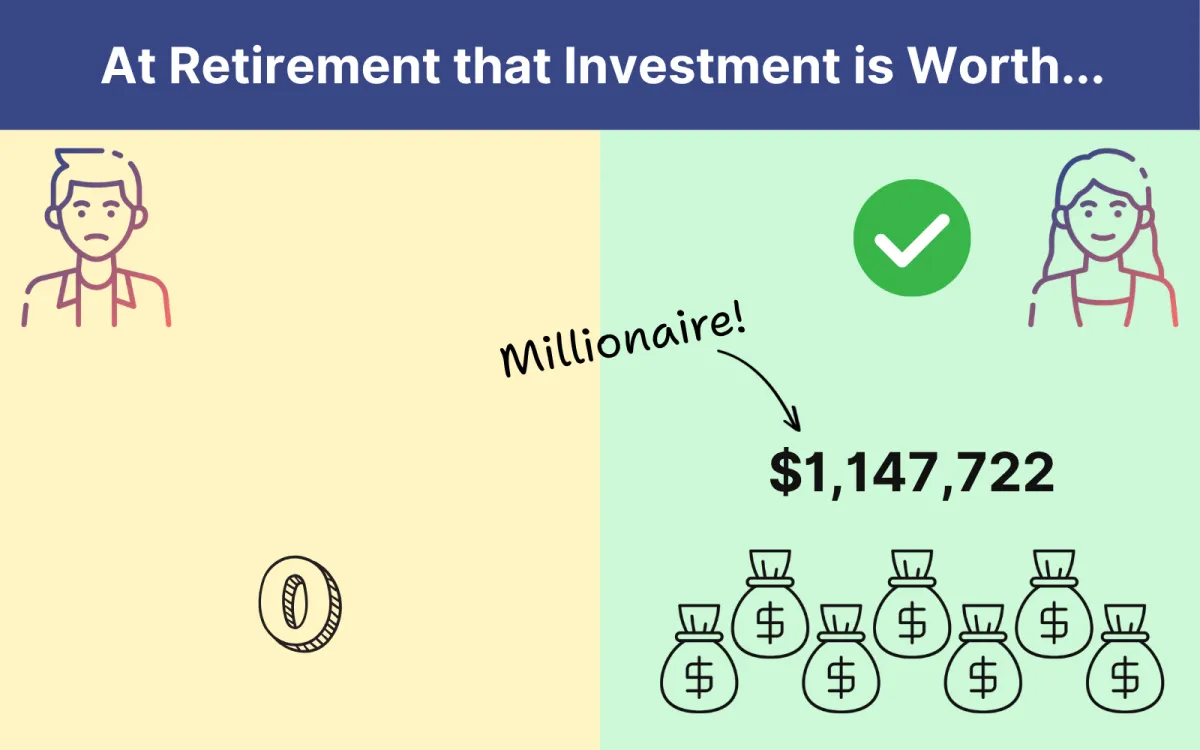
🏆 Tessa didn’t settle. She made a million-dollar decision.
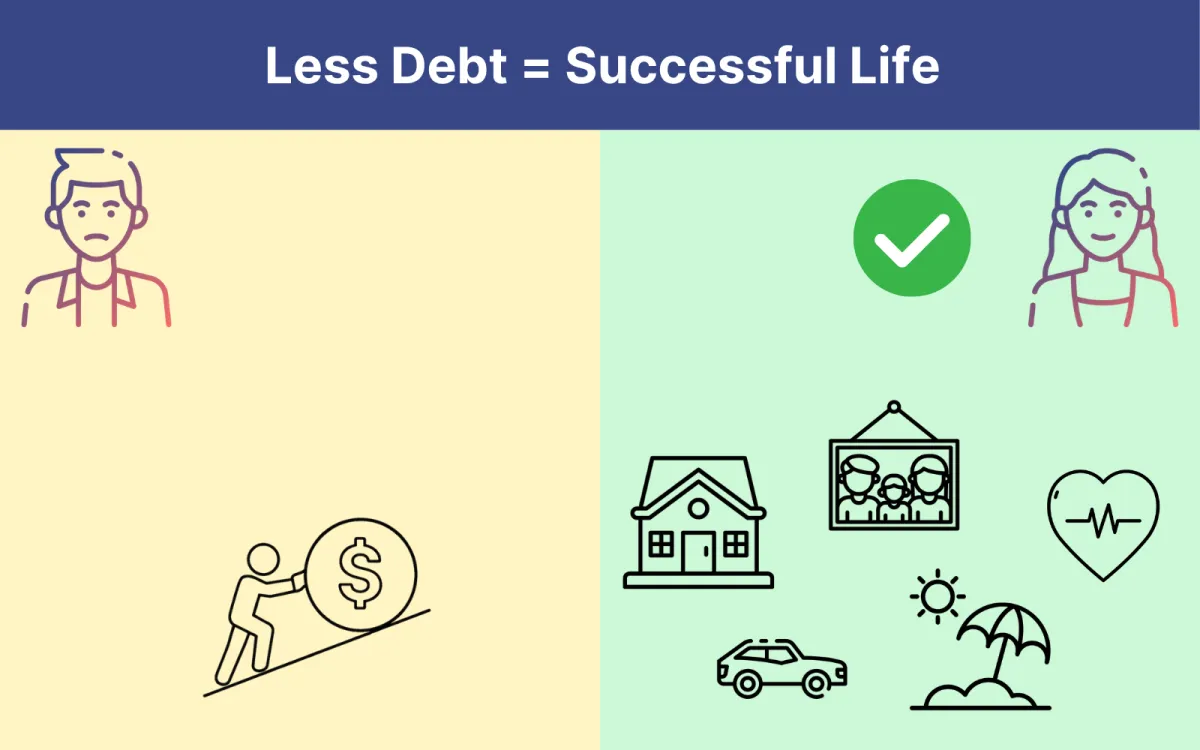
Right Fit Colleges Aren’t a Sacrifice. They’re a Brilliant Power Move.
The Right Fit school will give your kid:
Professors who care about them as a whole person
Real-world experience that builds confidence and resumes
A campus environment that encourages their growth, goals, and dreams
A degree — and a life — they can actually afford
Because what sets your child up for a great life isn’t a ranking.
It’s belonging. Financial freedom. And the chance to build a future that fits.
And here's the best part:
👉 You can help them get there — without sacrificing your own future in the process.
Can you feel it?
THIS is the moment the pressure lifts… and a smarter path comes into view. 🧘
Tap "Hell yes!" if you’re ready to choose freedom — for them, and for you.
🖐️ Hell yes!
Let's recap real quick...
✅ Right Fit Path vs.
❌ Prestige Trap
Right Fit Path
Prestige Trap
Student Experience
Challenged and supported, with space to grow
Pressure cooker, Imposter Syndrome risk
Mentorship & Support at School
Professors who focus on teaching
Famous researchers, limited student contact
The Debt Anchor
Avoided
Dragged into middle age — and beyond
Career Outcomes
Similar average salaries in most fields
Slight boost, especially in a few narrow industries
Life Satisfaction
Higher with financial security and meaning
Lower when stress and debt collide
Retirement Potential
Room to invest early, grow long-term
Delayed wealth-building, no surplus to save
But Wait…. If The Numbers Are This Clear, Why Are So Many Families Still Overpaying?
It’s not their fault.
We’ve been sold a story by a broken system. One that makes billions by keeping families anxious, confused, and in debt.
So how did we get here?
Next, we’re pulling back the curtain on The Rankings Trap — the source of so much pressure, confusion, and misdirection.
🚨(Warning: There’s faked data, gaming the system, and actual jail time. And that’s just the beginning.)
We’ll show you exactly how to break free from The Rankings Trap… and how to find the school that fits your child’s and your family’s future.
That’s all coming up next in… The Rankings Trap Exposed
